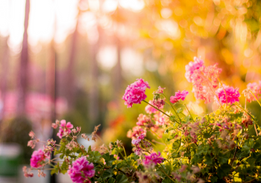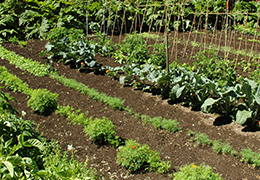Is my garden receiving enough sunlight?
Ferry-Morse Home Gardening Blog | 2024

Garden of red-and-yellow variegated, red, and maroon tulip flowers in bright sunlight
So, here’s the deal, without sunlight, we wouldn’t exist!
The life of every living thing on Earth depends on the massive ball of burning plasma at the center of our solar system called The Sun.
If humans avoid sunlight, our vitamin D levels plummet. So, imagine what inadequate sunlight exposure does to our plants?
And while we need sunlight to sustain life (as we know it), there is a point at which it can shift from beneficial to damaging, which is why it’s good to have an idea of how much sunlight our gardens need to survive and thrive.
In this article, we’ll help you understand how much sunlight your garden needs. So, let’s shine a light on this topic and get started!
Sunlight basics for gardening
The amount of sunlight your garden needs depends on the varieties you want to grow. For example, if you’re growing vegetables, your garden needs six to eight hours of sunlight. We recommend focusing on types that work with the amount of natural light your garden receives.
However, you might want to try modifying your space to allow more light in your garden because it will afford you a little more flexibility in the varieties you can grow, which can be pretty exciting and enjoyable, right?

Three mirrors on a garden wall to help reflect light and heat from the sun
What do full sun, partial sun, partial shade, and shade mean?
Kansas State University’s Research and Extension Service defines sun requirements for plants as follows:
| Type of sunlight | Hours of direct sun |
|---|---|
| Full sun | ≥ 6 |
| Light shade | ≈ 3–5 |
| Partial shade (part sun or part shade) | ≈ 2 |
| Full shade | ≤ 1 |
| Dense shade | 0 |
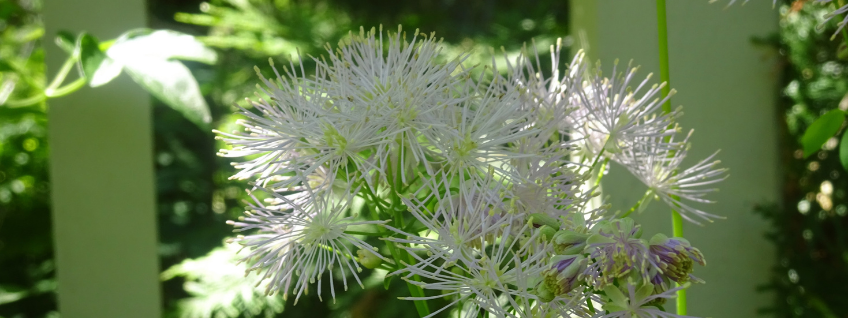
Closeup of white wildflowers growing in partial shade
Intensity matters
Sunlight reaches its highest intensity between 10 a.m. and 4 p.m. Morning sun is the least intense.
A few hours of morning sun isn’t as intense as a few hours of mid-day and afternoon sun, realizing the hot afternoon sun can burn the leaves of some plants, even those of certain sun-loving varieties.
If your garden receives morning sun, but only a little in the afternoon, then look for plants that grow well in light shade or partial shade. Full sun plants adapted or native to a cooler growing zone can also work in these garden spots.
If your garden receives intense afternoon sun, plant full sun and resilient part sun varieties. Because if you live in a hot growing zone, less-resilient part-sun plants might scorch under the intensity of your afternoon sunlight. It's best to ask your local extension office to help you find suitable varieties.
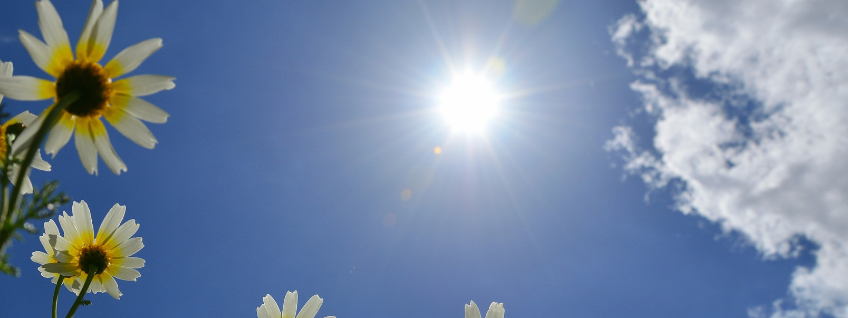
Daisies viewed from below under a blue sky, sparse clouds, and intense sun
Winter vs. summer
It’s important to know that a winter shadow is longer than a summer shadow. In the winter sky, the sun hangs low, whereas it is high overhead in summer. For this reason, consider calculating your garden’s sunlight exposure during your growing season to account for seasonal differences in shade.
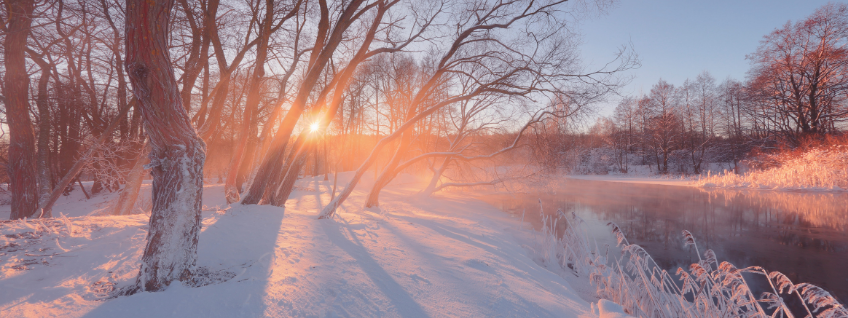
Winter sun hanging low in the sky, casting long shadows through the trees of a snowy landscape
Let’s shed more light on this topic
In the sections below, we’ll start with the pale light of a shade garden and then let in more rays until we arrive at growing a full-sun garden.
Shade gardening
Within the broader categories of sunlight are different degrees of shade, and any guess what they are?
The University of Minnesota Extension Service published a helpful guide on shade gardening that’s worth your time to check out.
See their definitions of shade types in the table below. Just remember that this level of detail might not display on a plant tag in a commercial setting.
| Shade type | Description |
|---|---|
| Dappled | Light filtering through treetops |
| Light or part | ≈ 3–6 hours of sunlight |
| Full | ≤ 3 hours of sunlight |
| Deep | Almost no sunlight |
The fact is that many plants thrive in low-light conditions. For some of our favorite flowering perennials, shade allows them to succeed in hot growing zones. Examples include columbine and oakleaf hydrangea.
And if you’re looking for some showy part shade flowers, then consider Little Lime and Nikko Blue hydrangeas as excellent plants for part shade.
Got trees? While trees are a valuable part of any landscape, there is a tendency for bare spots to develop under the shade they provide.
But want to know the best part? Hostas can fill in those bare spots because they’re lovely perennials for part shade. Consider trying any one of the following varieties:
| Variety | Size | Leaf color |
|---|---|---|
| Small | Green | |
| Medium | Green gold | |
| Medium | Chartreuse with a yellow edge | |
| Medium | Gold with a dark-green edge | |
| Medium | Dark green with a white center | |
| Medium | Yellow with a green margin | |
| Large | Bright-green with yellow center | |
| Large | Blue-green with gold-green margin |
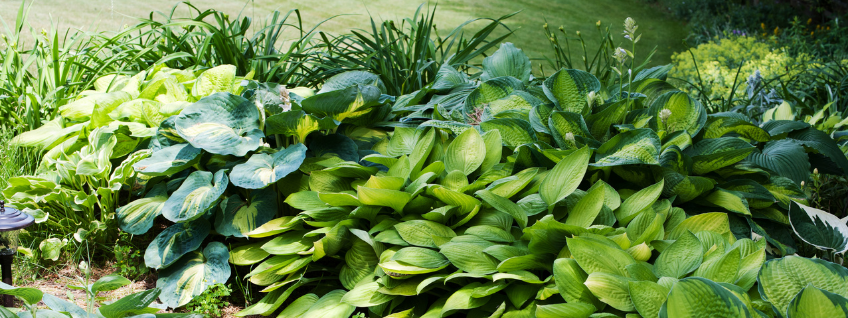
An assortment of hostas in a garden
Shade and your growing zone
Again, don’t forget that your growing zone is the linchpin keeping your whole gardening experience anchored successfully in the ground.
For example, shady spots are the coldest and last to thaw in zones where it snows.
For United States Department of Agriculture (USDA) Hardiness Zone 5 perennials, shade temperature in the winter can be as low as -20°F, which means that your plants have to survive extreme cold—extended by the shade—to reemerge during the next growing season.
And in a warm zone, varieties like annual impatiens thrive while bathed in lower-light warmth.
Shade and soil moisture
Shady spots tend to have the highest soil moisture levels, but there are also very dry shade gardens. Simply use a soil moisture sensor to get a pretty good idea of the conditions so you can happily go about selecting the best varieties for that spot.

Perennial shade garden creating a landscaped entry near a black iron gate and fence
Perennials for part shade
Perennials for part shade include beautiful flowers like delphinium. Plant tags and catalogs will identify these shady-spot brighteners as either part sun or part shade perennials.
Some perennial flowers for full sun—like hollyhocks—perform better as flowers for part-shade in hot climates where temperatures aren’t ideal.
Remember that a plant tag might not always indicate perennials’ part-sun needs for regions where the afternoon sun is leaf-singeing hot. (Unfortunately, tags—while helpful—can be rather generic that way.)
Part shade vegetables
In part shade, vegetables don’t perform well, generally.
An exception is cool-season crops needing relief from the afternoon sun in a hot growing zone. In this case, part-shade conditions can benefit plants like lettuce, cole crops, green onions, and root vegetables.
A companion-planting scheme to accommodate sunlight might be to plant rows of tall okra with lettuce in between the plants. An oft-cited example of companion planting to create part-shade conditions is the Three Sisters Method developed by Native Americans.
Plants for part sun, part shade
In plants classified as perennials, part sun varieties are Canterbury Bells and
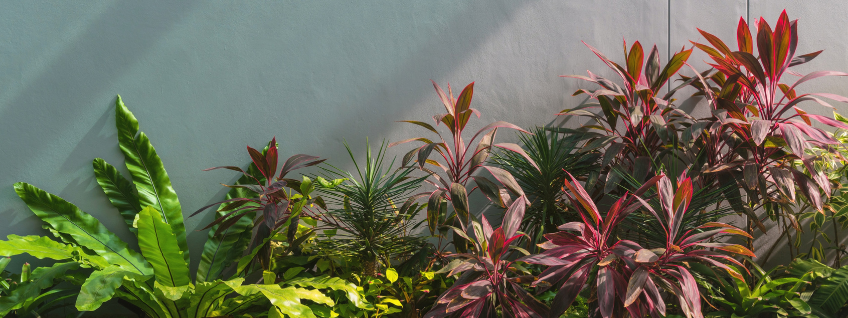
Tropical garden shaded by the edge of a roof with rays of sunlight illuminating some of the leaves
Plants for full-sun gardens
Vegetables, herbs, and fruits are perfect plants for full sun gardens.
Classically beautiful flowers for full sun gardens include carnations, marigolds, and poppies, which many gardeners love and cherish.
Of annuals, flowers for full sun garden spots include resilient varieties like portulaca and bluebonnet. Perennials that bloom all summer in full sun include sunflowers and yarrow.
A fun fact is that sunflowers follow the path of the sun! And here’s a time-lapse video that shows you how.
For low-maintenance perennials, full sun options include almost all kitchen herbs like basil, rosemary, and oregano. And believe us, it’s pretty satisfying to see your very own plot of yummy seasonings soaking up the sun in the dazzling midday light of your backyard garden.
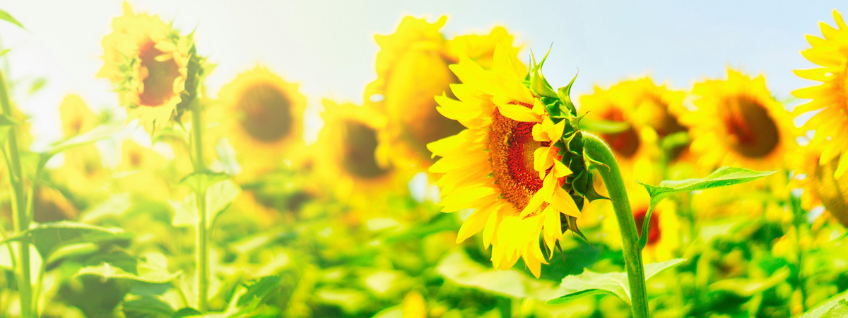
A field of sunflowers facing the direction of The Sun
Best perennial for a full sun garden
The best perennial for full sun depends on your growing zone.
For example, in Zone 5, medicinal echinacea is an excellent choice, whereas, in Zone 9, butterfly weed is a great selection. These perennial full-sun plants handle both the temperature and light intensity of their respective zones with ease.
Beautiful and valuable drought-tolerant full-sun plants are lavender and sage. In general, the best drought-tolerant, full-sun plants are
Some perennials’ full-sun needs are variable, like bee balm, which thrives in a wide range of temperatures, but in warmer zones with extremes in heat, it might benefit from a bit of shade from the harsh afternoon sun.
Other perennials for full sun—some edible and some not—include:

A hummingbird enjoying nectar from a red bee balm flower
Portable containers to meet plants’ full-sun needs
Consider using portable containers that you can move easily to access sunny spots in your garden.
Flower container ideas for full sun should include thriller, filler, and spiller plants for your growing zone. For example, bachelor button (thriller), dwarf cosmos (filler), and portulaca (spiller) combine well.
Other full-sun flowers for pots include eye-catching amaranth, dependable zinnias, and purple trailing lantana, which happens to be another great combination for a container!
Many vegetables and herbs make perfect container plants for full sun and heat, such as basil, eggplant, oregano, peppers, thyme, and tomatoes. So if you have a sunny patio or porch, you can achieve a well-rounded garden to supplement your household’s groceries.
Hanging plants for full sun include petunia and varieties of trailing succulents, like

Yellow cosmos flowers in the sunshine
Other plants for full sun
We just can’t help but think about bright days and photos of happy plants flooding social-media timelines (in which you’re always welcome to tag us because we’d love to feature your garden).
So, here we go with more plants that adore the sun’s bright light!
Wildflowers are excellent perennial plants for full sun. Try baby’s breath, common poppy, cornflower, foxglove, golden tickseed, and pot marigold.
For some perennial plants, full sun conditions in one growing zone might stress them while they thrive in another. So, always read the plant tag or seed packet to be sure you are considering each plant’s light and temperature preferences.
Also, full sun conditions need to last more than six hours for some outdoor plants, such as vegetables, which perform best with eight hours of full sun.
Potted plants for full sun include reliable varieties like blanket flower and cacti. And two great succulents for full sun are portulaca and sempervivum.
As for groundcovers, plants for full sun include creeping phlox and lantana.
Lantana plants, drought-tolerant, full-sun lovers, perform well across several hardiness zones and bloom profusely, attracting beautiful butterflies and other pollinators.
For perennial plants, full sun isn’t the only determining factor for a plant’s success. Please don’t forget to factor in moisture, temperature,

Purple phlox growing at the base of a tree near a stream
Where to find sunlight requirements for your seeds?
Often, sunlight requirements will display on a seed packet. To learn more, please see our instructions on how to read a seed packet.
The best part is if sunlight requirements are missing from your seed packet, the information we've provided here will set you on the right path. Take it a step further by reading what Oregon State University's Extension Service says about how light affects plant growth.
Sunlight requirements usually display on plant tags as a sun icon, making it pretty obvious! In general, following the instructions on plant tags and seed packets will significantly increase your chances of success. Please remember to cross-check against your specific growing zone and site conditions for best results.
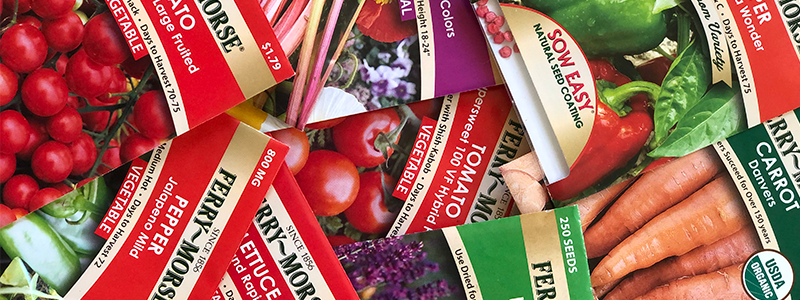
An assortment of seed packets
How to understand how much sunlight my garden is getting?
The simple approach is to observe your garden at various points throughout the day and then approximate the number of hours.
If you’d like to take it a little further, hand-draw a map. Check out these detailed instructions on making a sun map of your garden. It’s worth your time and let us know about your experience in the comments below!

Sunlight shining through trees on a field of low-growing flowers
Now it’s your turn to shine
It doesn’t take much to work with (or around) your garden’s sunlight. It’s one of the last great resources that’s free and available to all.
However, we acknowledge that some of our gardens are in sunlight-challenged areas, such as apartments and wooded lots, while others have to put up shade covers to keep their plants from burning to a crisp!
No matter your circumstances, please know that we are always available. Contact us on our support page or social media, and we’ll be happy to listen to your concerns and do our absolute best to advise you. So, take a moment to reflect on that illuminating offer. And don’t forget that you need sunlight as much as your plants!
CLICK HERE TO EXPLORE THE REST OF THE FERRY-MORSE GARDENING BLOG -->


